The pandemic reminded us that necessity is the mother of invention and, in some cases, progress.
Necessity, and political calculation, certainly moved us ahead when it comes to how we conduct our elections in Illinois. We should keep that momentum going.
Illinois lawmakers made a major shift in 2020 in accepting voting by mail and by drop boxes, and now they’ve moved to make that option permanent, something many advocates had been pushing for years. Lawmakers also, at least for next year, pushed the primary election day back three months to June 28.
They wouldn’t acknowledge it publicly, but supermajority Democrats did this in order to wait for late census results before drawing congressional districts. The late results would have caused havoc with the election calendar. But plenty of people long have believed holding primaries in March in Illinois only drives down participation. It will take some effort by voters to push lawmakers to make the June move permanent, however. Historically, the major political parties have preferred March because it gives them more control over who votes in cold-weather primaries.
Democrats patted themselves on the back for these changes this spring, contrasting them with efforts in Georgia, Texas and elsewhere to change laws that likely will suppress voting. The difference between what happened here and there is stark, and so let’s give credit where it is due. It is still important, however, to continue to ensure Illinois provides enough polling locations for voters who don’t have confidence in the U.S. postal system or who don’t have the time or internet access to apply to vote by mail.
We have a primary problem in America. Illinois lawmakers should continue to lead by becoming one of the early states to fix that. People don’t like partisan primaries. They don’t like having to ask for one party’s ballot or the other, and they don’t participate. Only a bit more than 28 percent of Illinois voters cast ballots in the 2020 primary election, and it was just above 26 percent in 2018.
Here and around the country, this creates a long-term and deep governing problem. Just 10 percent of eligible voters nationwide cast ballots in primaries that effectively decided the outcome of more than 80 percent of congressional elections, the Unite America Institute concluded in a recent report.
Nick Troiano, Unite America’s executive director, wrote in the Atlantic that low-voter partisan primaries “disenfranchise voters, distort representation, and fuel extremism—on both the left and, most acutely (at present), the right.”
In effect, the foundation of our democracy is fracturing us. Gerrymandering and partisan primaries drive the hyperpolarization that is paralyzing many governments and driving down voter participation.
We’ve created systems that incent politicians to move to the fringes because they concern themselves, primarily (pun intended), with whether they will be primaried.
It doesn’t have to be this way. Progress, invention and trials are underway in some states. New York City, of course, just held its first primary where voters ranked candidates to determine winners.
In Maine, lawmakers followed up ranked-choice voting with sending their governor a bill to allow unaffiliated voters to cast ballots in primaries. The nonprofit Open Primaries says nearly a third of Maine voters are unaffiliated, and that’s a growing trend nationwide.
In Alaska, voters moved to an open, nonpartisan primary. The top four finishers of whatever party affiliation advance to the general election, where voters can rank them. Troiano suggests that major move might be what freed Alaska’s Sen. Lisa Murkowski to become the first Senate Republican to call for former President Donald Trump’s resignation.
Ranked-choice voting, opening up primaries and lowering the numbers of voter signatures it takes to run for Chicago-wide and Cook County-wide offices all are moves that could increase voter participation and access to the ballot. Illinois lawmakers took big steps allowing voting by mail and by drop box and by temporarily moving next year’s primary. Let’s take some more.
Madeleine Doubek is executive director of Change Illinois, a nonpartisan nonprofit that advocates for ethical and efficient government.
This article originally appeared on Crain’s Chicago Business.
